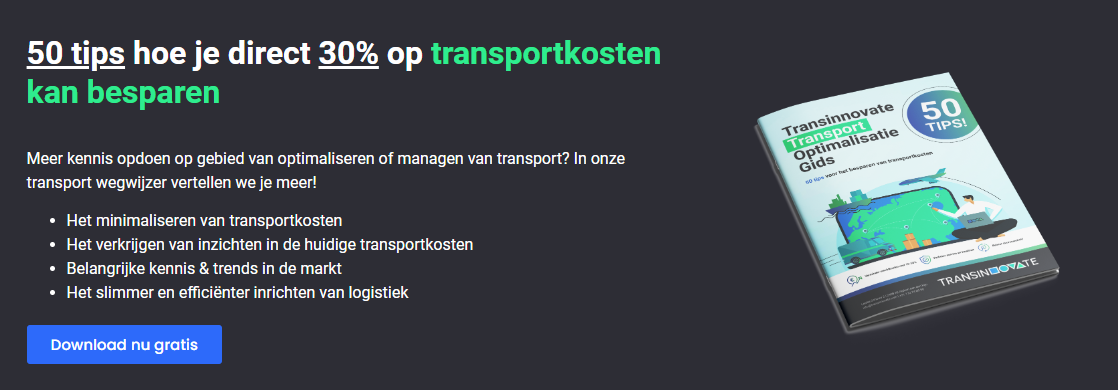Transport and Logistics Netherlands (TLN) has expressed its ambition to ensure that CO2 emissions from road transport are halved by 2030 compared to 2015. After all, when implementing the Paris climate agreement, the transport sector must also do its bit.
Digitalisation (smarter) and sustainability (cleaner) are currently the magic words when it comes to industrial policy in the Netherlands and Europe. Both words are also a common thread within Transinnovate. We are often asked how exactly sustainability is woven into our vision and activities. Today a blog with the answer.

Less and smarter transport
The best way to make transporting people and goods more sustainable is to transport less and/or smarter. The corona pandemic showed that we can work together quite well even remotely. For people, the trend will probably be 'less travel' and 'more digital cooperation'. For goods, the situation is slightly different, but here, too, the corona pandemic has shown that great dependence on production or sourcing from Asia also has disadvantages.
Transinnovate likes to think along with you about supply chain choices and the impact on transport costs, but also on sustainability. Think about strategic choices regarding warehouses or factories or consolidating smaller shipments into fewer but larger ones, planning smarter transport routes, etc.
We also promote home working and online cooperation between branches with our transport management software (TMS) applications. This allows shippers to control, analyse and oversee their operations anywhere, anytime. So travelling to the office is no longer necessary, while management has a grip, insight and overview.
Cleaner vehicles
Transinnovate also closely follows developments towards 'zero emission' transport, and we actively support a number of initiatives. Two examples of companies we support in realising their innovations are Ampaire (regional electric flying) and Computed Wing Sails for more sustainable large shipping.
Regional (up to 500 km) electric flying is a godsend for passenger transport, especially in places where rail and road are not alternatives. This will initially be hybrid electric. If so, a lot will be possible by around 2025. Ampaire is taking a pragmatic approach by retrofitting the existing fleet first, in order to quickly put that eventually lead to new aircraft concepts.
Computed Wing Sails is developing an innovation that could reduce emissions from large shipping. 90% of all the world's cargo goes by ship, and shipping is also facing increasingly stringent environmental standards. Large wings from CWS provide extra thrust in almost all wind conditions. They are durable, can fold and can tack due to a smart mechanism.
With the rise of e-commerce, the demand for smart and effective "last mile" distribution has also grown, such as electric urban vehicles and cargo bikes. Drones and Urban Air Mobility will also play a bigger role. They are already being experimented with. However, before it is deployed on a large scale, there are still some hurdles to overcome in terms of automation, safe airspace use and infrastructure.
Optimal deployment of clean(er) vehicles
If you as a shipper are going to procure transport, you can include sustainability as a criterion. You can do so by requiring certification such as lean & green. But you can also agree your own sustainability targets. Transinnovate can help you draw up smart and measurable criteria during a tender or RFP.
Transport costs are often determined by a significant part by fuel costs (typically between 20-25%). Carriers that have a network that better matches the shipment profile of shippers drive fewer kilometres, or less with (half) empty trucks on routes. So low transport costs and sustainability also regularly go hand in hand.
Change the status quo!
In short, Transinnovate is active from vehicle design to smart deployment, to promotion of home/distance working to achieve sustainable transport. In doing so, we always look beyond the status quo. "This is how we work" is never the end of the conversation for us, but the beginning. We would therefore like to hear from you, what your sustainability challenges are.




